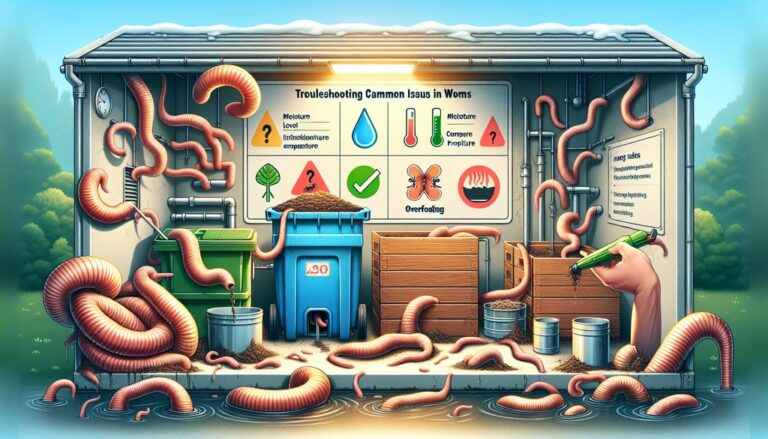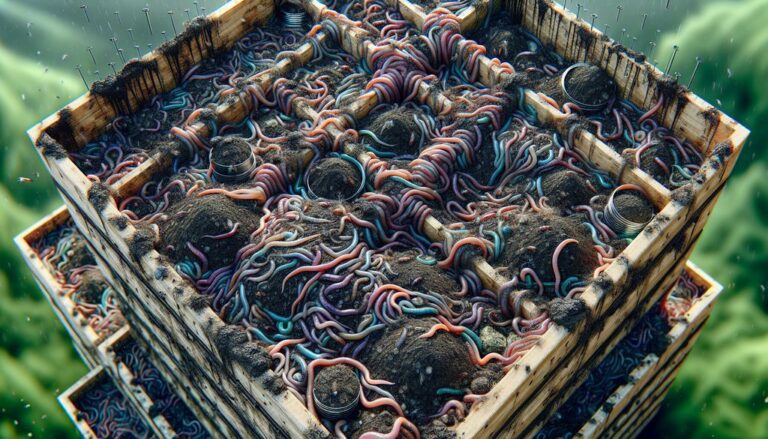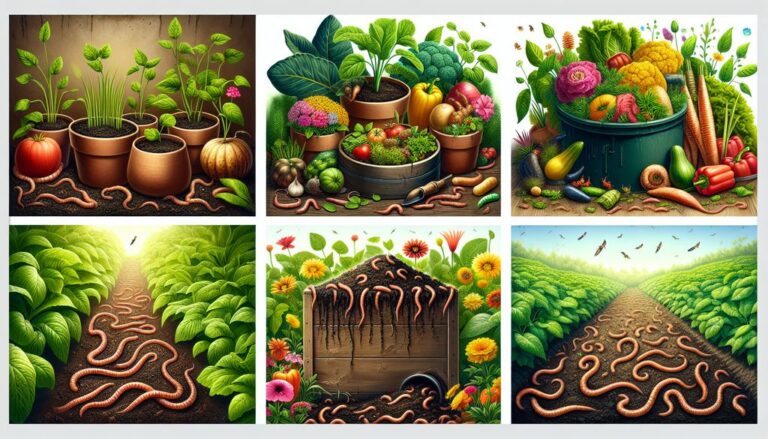In this article, we will explore the process of building a DIY worm bin, providing step-by-step instructions, materials needed, and tips for successful vermicomposting. Building your own worm bin is an eco-friendly and cost-effective way to produce nutrient-rich compost for your garden. Whether you’re a beginner or a seasoned composter, creating your own worm bin is a rewarding and sustainable endeavor.
Key Takeaways
- Building a DIY worm bin is an eco-friendly and cost-effective way to produce nutrient-rich compost.
- Step-by-step instructions and materials needed are essential for successful vermicomposting.
- Tips for successful vermicomposting include maintaining proper moisture levels and avoiding acidic materials.
- DIY worm bins can be customized to suit your space and composting needs.
- Vermicomposting with a DIY worm bin reduces household waste and benefits the environment.
Building a DIY Worm Bin
Step-by-Step Instructions
Building your own worm bin is a rewarding project that can help you reduce waste and create nutrient-rich compost for your garden. Here’s how to get started:
- Construct the frame by attaching the side pieces together. Use glue, pilot holes, and screws to secure the sides, ensuring the frame is sturdy.
- Once the frame is ready, install the worm bag. Align the seams of the bag diagonally to the frame, fold over the top, and tuck underneath.
- Ensure the bag is securely attached to the frame, with the nylon cord allowing for some movement.
Remember, precision is not as important as making sure everything is secure and there are no gaps for worms to escape.
By following these simple steps, you’ll have a functional worm bin ready for vermicomposting. Happy composting!
Materials Needed
Once you’ve decided to embark on the journey of vermicomposting, gathering the right materials is your first step. The materials you choose will directly impact the success of your worm bin.
For the structure of the bin, you will need:
- Mesh hardware cloth, which is affordable and sold in rolls.
- Wire fence and cable ties to secure the structure.
- A plank of wood or similar material for the lid.
Ensure that the lid fits snugly to prevent pests from entering and to maintain the necessary moisture levels inside the bin.
For the interior, you’ll require:
- A piece of fabric, preferably polyester felt, measuring 72" in width and 1 1/2 yards in length.
- Wood screws (16 pieces, 1 1/4" long).
- Wood glue.
- Nylon cord or old hiking boot laces for handles.
Remember, the dimensions of your bin should be tailored to fit your space, but a standard size could be 24" tall x 20" wide x 15" deep. This size is convenient for most homes and offices. When selecting a lid, consider using 1/4" thick plywood for a balance between durability and ease of use. If you opt for a wooden lid, you may also want to paint or seal it to protect it from moisture.
Tips for Successful Vermicomposting
Vermicomposting is a rewarding process, but it requires attention to detail to ensure a thriving environment for your worms. Maintaining the right moisture level is crucial; your bin should feel like a wrung-out sponge. If it’s too dry, lightly spray with water, and if it’s too wet, add more bedding material like shredded cardboard or paper.
When feeding your worms, be mindful of what you add. Kitchen scraps such as fruit and vegetable peels are excellent, but avoid items that may cause odors or attract pests, like garlic, onions, and meat products. Here’s a simple list to help you remember what to feed your worms:
- Fruit and vegetable scraps
- Coffee grounds and filters
- Tea bags (remove staples)
- Crushed eggshells
- Shredded newspaper and cardboard
Keep the bin in a dark and cool location, away from direct sunlight. This mimics the natural environment worms thrive in and helps prevent overheating.
Remember, vermicomposting is not an overnight process. It takes time for worms to convert scraps into nutrient-rich compost. Patience is key, and with regular care, you’ll be rewarded with a natural fertilizer that’s excellent for your garden.
Conclusion
In conclusion, building a DIY worm bin is a rewarding and environmentally friendly project that anyone can undertake. With the step-by-step instructions provided, you can create your own worm compost bin and contribute to sustainable waste management. Whether you’re new to composting or looking for a fun family project, there are various DIY worm bin designs to suit your needs. From simple five-gallon bucket bins to three-tiered systems, the options are endless. Start your composting journey today and make a positive impact on the environment!
Frequently Asked Questions
How long does it take to build a DIY worm bin?
The time it takes to build a DIY worm bin can vary depending on the complexity of the design and the materials used. On average, it can take anywhere from a few hours to a weekend to complete the construction.
What materials are needed to build a DIY worm bin?
The materials needed to build a DIY worm bin may include wood planks, boards, screws, power drill, saw, and other minor tools and supplies. The specific materials will depend on the chosen design and size of the worm bin.
How do I separate worms from compost in the worm bin?
There are several methods for separating worms from compost in a worm bin, including using a worm bin bag for indoor vermicomposting, creating an odor-free indoor compost bin, or using a redworm and castings table harvester.
Can kids be involved in building and using a DIY worm bin?
Yes, kids can be involved in building and using a DIY worm bin, especially with small worm compost bins that are easy to put together. It’s a great way to get kids excited about composting and gardening.
What are some tips for successful vermicomposting with a DIY worm bin?
Some tips for successful vermicomposting with a DIY worm bin include maintaining proper moisture levels, providing a balanced diet for the worms, and regularly aerating the compost to prevent odors and promote decomposition.
Are there any affordable options for building a DIY worm bin?
Yes, there are affordable options for building a DIY worm bin, such as using leftover lumber, plastic cups, or empty laundry detergent cartons. There are also inexpensive DIY compost bin designs that can be easily built with minimal cost.






